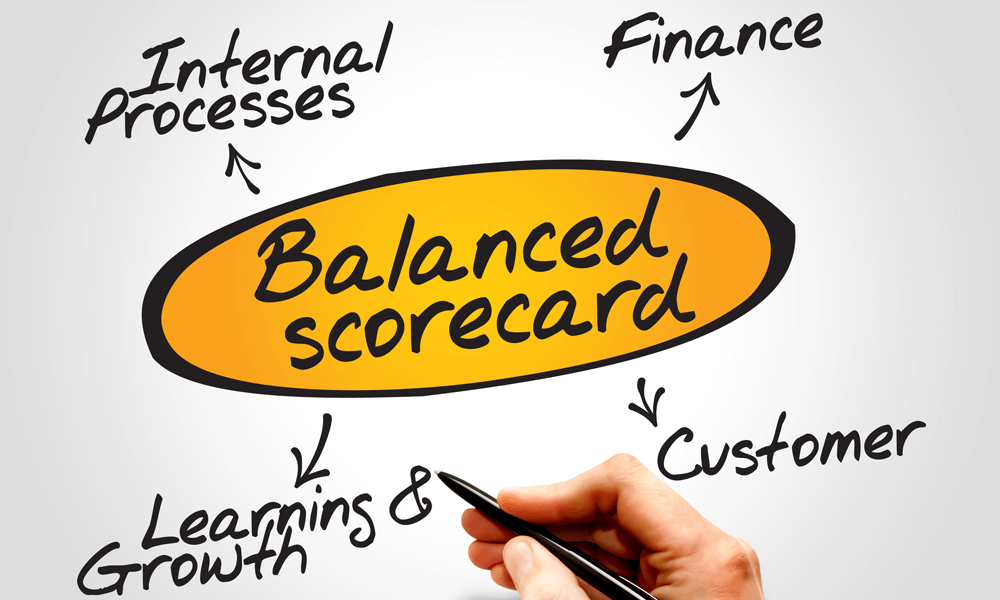Performance Management through Balanced Scorecard (BSC)

Greater Noida Productivity
Council
Frm Director & Head, National
Productivity Council, GOI
Performance management is a continuous process of communication between a Superior and subordinates in any Organisations that occurs throughout the year, in support of accomplishing the strategic objectives of the organization.
The communication process includes clarifying expectations, setting objectives, identifying goals, providing feedback, and reviewing results.
This is done through a systematic Performance Cycle which includes, Planning,Organising,Directing and Control,which is the fundamental functions of Management, equally applied in this case also which is as such
1. To begin the planning process, you and your employee review overall expectations, which include collaborating on the development of performance objectives. Individual development goals are also updated. You then develop a performance plan that directs the employee’s efforts toward achieving specific results to support organizational excellence and employee success.
2. Goals and objectives are discussed throughout the year, during check-in meetings. This provides a framework to ensure employees achieve results through coaching and mutual feedback.
3. At the end of the performance period, you review the employee’s performance against expected objectives, as well as the means used and behaviours demonstrated in achieving those objectives. Together, you establish new objectives for the next performance period.
For this Organisation should have an effective Performance Appraisal Systems then only Performance Management will be effective and achieve the Objectives of Organisations. Some of which is mentioned as such;
1. 90 degree appraisal: This is the most basic form of performance appraisal. In this method the appraiser/manager gives their evaluation of the employee. This appraisal method does not provide any self-evaluation system to the employees. It facilitates only one way and top down communication.
2. 180 degree appraisal:This is one of the simplest ways to appraise employees. The employee evaluation process starts with self-evaluation step where the employee fills a form giving appropriate ranking to himself / herself and shares feedback on their own performance. After completion of this step, the manager discusses the self-appraisal of the employee in a review meeting. Once all the information is agreed by both the parties, including the manager and the employee, appraisal is finalized, which is more transparent.
3. 360 degree appraisal : 360 degree respondents for an employee can be his/her peers, managers (i.e. superior), subordinates, team members, customers, suppliers/ vendors – anyone who comes into contact with the employee and can provide valuable insights and information or feedback regarding the “on-the-job” performance of the employee.360 degree appraisal has four integral components: (a) Self-Appraisal: Self-appraisal gives a chance to the employee to look at his/her strengths and weaknesses, his achievements, and judge his own performance (b) Superior’s appraisal: Superior’s appraisal forms the traditional part of the 360 degree appraisal where the employees’ responsibilities and actual performance is rated by the superior (c) Subordinates appraisal: Subordinates appraisal gives a chance to judge the employee on the parameters like communication and motivating abilities, superior’s ability to delegate the work, leadership qualities etc. (d) Peer Appraisal: feedback given by peers can help to find employees’ abilities to work in a team, co-operation and sensitivity towards others. This system is more transparent, but suffers with some disadvantages (i)Taking a lot of time, and being complex in administration (II) Extension of exchange feedback can cause troubles and tensions to several staff. (III) There is requirement for training and important effort in order to achieve efficient working.(iv)Sometimes It will be very hard to figure out the results.
4. 540 degree appraisal: feedback is also collected from customers or clients. It has 5 dimensions: appraiser/manager, the appraisee(self-appraisal), peers, subordinates and customer/clients. In order to survive in the current competitive market, organizations aim at achieving high customer satisfaction. Customer or client feedback helps to analyze the customer point of view and help to improve the person and the organization.
5. 720 degree appraisal System:This appraisal system is basically a 360 degree appraisal performed twice. A second 360 degree is performed at a timely interval and compared against the results of the first 360 degree appraisal. 720 Degree Performance Appraisal, considered an “all-round” appraisal, is one of the most recently introduced concepts. The major setback in the previous methods of appraisal was that it did not guide the employee after the appraisal hence the 720 Degree Appraisal was introduced when the employees performance is measured, analyzed and targets are set in the first appraisal and after a short period his performance is measured again and proper feedback and guidance is given to ensure that the employee achieves the target.
Performance Management through Balanced Scorecard
This concept was originally developed byDr. Robert Kaplan of Harvard Business School andDr. David Norton, a IT Consultant as a framework for measuring organizational performance using a more balanced set of performance measures.
The balanced scorecard (BSC) is a strategic planning and management system. Organizations use BSCs to: Communicate what they are trying to accomplish. Align the day-to-day work that everyone is doing with strategy. Prioritize projects, products, and services. These four perspectives are as such;
1. The Financial perspective
Most of the organisations, Public or Private, Profit/surplus generation is the first priority without which it will be difficult to survive. Essentially, key objective is related to the company’s financial health and performance may be included in this perspective. Revenue and profit are obvious objectives that most organisations list in this perspective. Other financial objectives might include:
• Cost savings and efficiencies (for example, a specific goal to reduce production costs by 10% by 2022)
• Profit Margins (increasing operating profit margins, by whatever measures)
• Exploring Revenue sources (for example, adding new revenue source by adding new area of services etc)
2. The Customer perspective
This perspective focuses on performance objectives that are related to customers and the market. In other words, if you’re going to achieve your financial objectives, what exactly do you need to deliver in terms of your customers and market(s)? In a competitive market Customer is Supreme. So this Customer Perspective includes
• Customer service and satisfaction (increasing net promoter scores, or reducing response time/ waiting times, for example)
• Market share (such as, growing market share in a certain segment or country)
• Brand awareness (for example, increasing interactions on social media)
3. The Internal Business Process perspective
What processes do you need to put in place to deliver your customer- and finance-related objectives? That’s the question this perspective aims to answer. Here you would set out any internal operational goals and objectives or, in other words, what does the business need to have in place and what does the business need to do well in order to drive performance? For example
• Process improvements (for example, streamlining an internal approval process)
• Quality optimisation (such as, reducing manufacturing waste)
• Capacity utilisation (using technology to boost efficiency, for instance)
4. The Learning and Growth perspective
While the third perspective is about the concrete process side of things, this final perspective considers the more intangible drivers of performance. Because it covers such a broad spectrum, this perspective includes:
• Human capital – skills, talent and knowledge (for example, skills assessments, performance management scores, training effectiveness). It is often said human obsolescence is worse than technological obsolescence.
• Information capital – databases, information systems, networks and technology infrastructure (such as, safety systems, data protection systems, infrastructure investments)
• Organisational capital – culture, leadership, employee alignment, teamwork and knowledge management (for example, staff engagement, employee net promoter score, corporate culture, auditsetc)
Finally to conclude, the organisations may adopt appropriate tools of Performance management, keeping in mind, the forms of organisation, nature of operations, and its mandate in such a manner that at all stages of performance appraisals and management the principles of transparency must be taken care of without any compromise. As it is often quoted Justice should not only to be done, but it should be made apparent.





